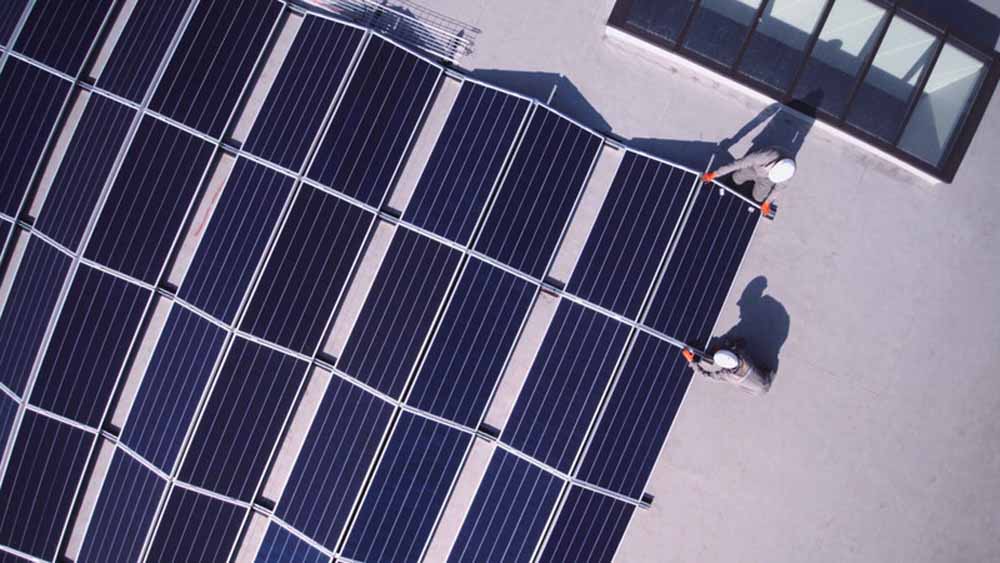The passage of the Inflation Reduction Act of 2022 through the US Senate once again highlights the issue of local manufacturing investment. The legislation will now go to the House and if signed into law, will provide important incentives that we expect will catalyze significant investment in US solar manufacturing, facilitate the creation of a stable domestic solar supply chain, and allow the US to aggressively pursue the decarbonization of its economy with less reliance on imported solar products. Such measures will provide much needed support to the existing local solar industry, and promote further investment and job creation in US manufacturing by Maxeon and others.
While there have been some bumps in the regulatory road getting to this outcome, I have confidence in the US market and its potential to become a solar hub. In contrast to what some of my peers have said, I don’t believe we need to make a hard-line choice between investment in the US and other fast-growing markets such as Europe and India who are also focused on developing integrated upstream solar supply chains. Each of these major growth markets offers its own unique opportunities and challenges that need to be carefully considered, but they share the common attributes of massive solar deployment targets and a strong desire to onshore a complete value chain. We see this localization across the globe as an exciting and positive trend.
To order to meet the Biden administration’s target of a carbon-free power sector by 2035, according to the Solar Energy Industries Association (SEIA), US solar capacity will need to rapidly expand from roughly 3% of US. electricity generation today to 30% by 2030. This 2030 target would see carbon emissions from the electricity sector reduced by 50% – a goal worth striving toward.
Moving forward
Although the recent passage of the Inflation Reduction Act of 2022 faced procedural hurdles and was ultimately achieved along strictly partisan voting lines, there has historically been solid bipartisan support for growing the solar energy sector, both with respect to downstream deployment and upstream manufacturing. I am convinced that after the legislative smoke clears, we will see the pace of solar deployment and local manufacturing grow meaningfully, and with increasingly positive support from all sides of the political spectrum, particularly as much of the activity is likely to take place in red states and counties. .
Maxeon is well positioned and willing to help achieve these objectives. In April of last year we announced our intention to construct a 3 GW manufacturing facility in the South East of the US, pending the implementation of appropriate incentives and the successful application for a DOE loan. Since that time, we have conducted an extensive site selection process, completed preliminary engineering studies for our factory, and submitted a Part 2 application to DOE’s Loan Program Office. We are ready and excited to move forward with this project quickly. The DOE is very focused on fuelling innovation in solar power and adjacent industries. An example of this was the recent commitment of $56 million to supporting projects that reduce manufacturing costs and increase the ways in which panels are reused and recycled. We believe that our 3 GW US factory is the type of project that the DOE and the administration would like to support, and one that will ultimately achieve bipartisan appeal. Both domestic and global demand for our product is large and growing, and we are pursuing multiple pathways to serve this demand.
The demand is there
SEIA’s projections predict 35 GW of deployment over the next five years in California and Texas alone, not to mention rapidly expanding demand in the Eastern half of the country.
We have already announced supply contracts with major US power plant developers totalling almost 3.5 GW of backlog for Maxeon’s Performance-series panels, and our customers are clamouring for more.
The US residential and commercial solar markets are also extremely vibrant, and we are exceedingly focused on building our own DG channel to market in the US, similar to what we have achieved in Europe and Australia over the past decade.
One of the inescapable features of the energy transition is ever-increasing demand for electricity. Historical forecasts for future deployment have consistently been well short of actual volumes. We saw global electricity demand surge in 2021, and according to the International Energy Agency (IEA) this was the largest one-year increase ever observed. Altogether this surge created strains in major markets, pushing prices to unprecedented levels and driving the power sector’s emissions to a record high, it is a reflection of an underlying trend that is sometimes referred to as “the electrification of everything”.
California is now the largest electric vehicle market in the US, which has added considerably to its electricity demand. As solar power becomes more prevalent in states like California, it tends to naturally cover mid-day and early afternoon electricity supply. This shifts peak demand for other forms of generation into the evening hours as output from solar panels decreases. We and others see a huge opportunity for both large-scale solar power plants and individual customers to add battery storage to their solar systems to extend effective solar contribution into the evening and continue to increase overall solar penetration.
As we have already announced for Europe and Australia, we plan to also integrate unique battery storage capabilities into our residential solar system offers in the US – transforming the way customers in this market access solar energy and manage their energy footprint.
Deep roots
Ultimately, our confidence in the US solar market rests on the fact that we are connected to an over 35-year legacy in this country – preceding our spin-off from SunPower in 2020. We know the market, understand the customers, and have a nuanced appreciation for the policy environment.
As an American, I am very excited to see my country build a path toward establishing a solar supply chain. At Maxeon, we are confident that solar will form a key part of the US energy mix and are determined to be an increasingly significant and visible key player in its future growth, as we continue to innovate and power positive change.
 Jeff Waters is CEO of Maxeon Solar Technologies
Jeff Waters is CEO of Maxeon Solar Technologies
The views and opinions expressed in this article are the author’s own, and do not necessarily reflect those held by pv magazine.
This content is protected by copyright and may not be reused. If you want to cooperate with us and would like to reuse some of our content, please contact: editors@pv-magazine.com.








By submitting this form you agree to pv magazine using your data for the purposes of publishing your comment.
Your personal data will only be disclosed or otherwise transmitted to third parties for the purposes of spam filtering or if this is necessary for technical maintenance of the website. Any other transfer to third parties will not take place unless this is justified on the basis of applicable data protection regulations or if pv magazine is legally obliged to do so.
You may revoke this consent at any time with effect for the future, in which case your personal data will be deleted immediately. Otherwise, your data will be deleted if pv magazine has processed your request or the purpose of data storage is fulfilled.
Further information on data privacy can be found in our Data Protection Policy.